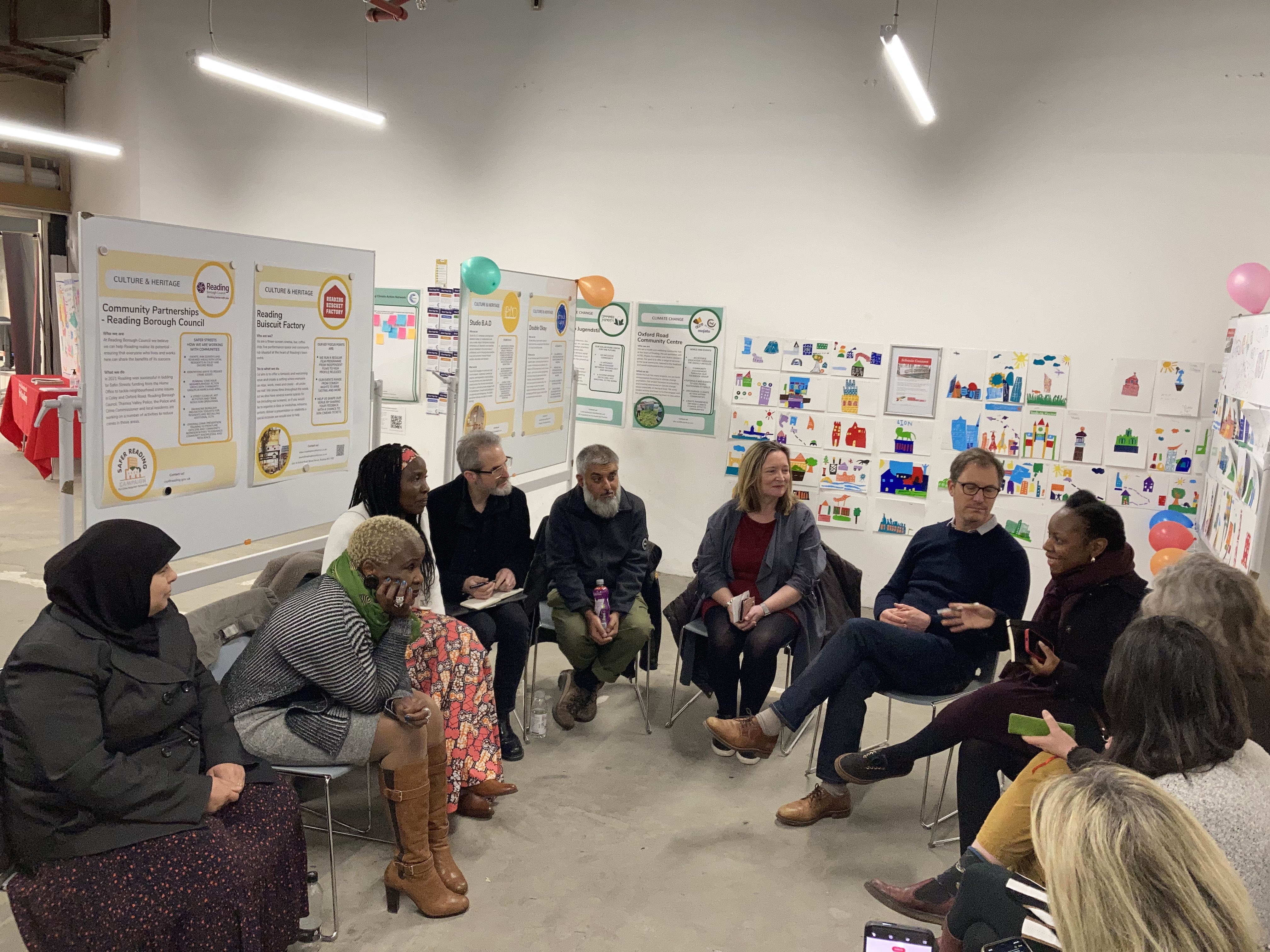Novel approaches to participation in planning
Posted on 11-05-2022
During my recent secondment at the University of Reading, School of Architecture I was lucky enough to participate in the Urban Room, part of the Community Consultation for Quality of Life (CCQoL) research project in the UK.[i] The ongoing research project is taking place during the development of four pilot projects in England, Wales, Northern Ireland and Scotland and brings together community groups, academic researchers, industry partners and local authorities, with the aim of improving the process of community consultation (CC) in planning. In Reading, it was a great opportunity to see how the issues mentioned above were being tackled “on the ground” so to speak, where local community groups were given a real space to meet and discuss important local issues.
During my experience of the Urban Room, I found the process of mapping social value combined with face-to-face engagement particularly important tools placed in the hands of citizens as much as experts in understanding and enhancing social value when undertaking processes of community consultation. The co-design of maps emphasises how people can have their say in creating a resource of local knowledge aimed at revealing the hidden attributes that benefit communities. As the map began to be populated with responses, I noticed how people’s feelings, now spatially strewn across different parts of the city, became a process of learning about and connecting with each other. Concurrently, the opportunity for people to casually meet in physical space has proven that face-to-face encounter still is incredibly necessary.
Both processes have indicated how important it can be to have control and power to take decisions collectively, rather than individually, as other researchers have noted.[ii] In focus group discussions, it has been made clear by community representatives that in real community consultation processes the community needs to there from the beginning as much as possible, pointing to the need for transparency, and for taking the “peoples’ pace”, highlighting the need for patience. These observations come in a time of rapid technological innovation and adoption of digital mediums both in data collection, consultation, design and visualisation, related to planning decisions that influence the development of quality of life in housing and neighbourhoods.
Recently, public-private partnerships in the development of housing and neighbourhoods seem to be growing but the methods of participation in planning that focus on the needs and aspirations of communities are just beginning to be updated. The processes of collaborative decision-making by involving communities directly and from the early stages have become increasingly important in the built environment disciplines. Yet, physical, technocratic design concerns seem to be dominant and perhaps easier to evaluate than the accumulated complexity of interactions that make social value at the neighbourhood scale. The integration of a set of social participation- with design-oriented guidelines is necessary.
A growing interest is observed in Urban Living labs (ULLs) as a physical setting and a methodology, with more emphasis placed on real-life settings of experimentation and collaboration between different stakeholders. Collaborative knowledge production and citizen-driven innovation in urban sustainability transitions is often prioritised. ULLs focused on innovation in urban planning processes, are being defined by the term City Labs.[iii] The influential research currently underway on community engagement in Urban Rooms is an exciting and promising trajectory for innovation in participatory planning that shares aspects of the ULLs/City Labs by involving communities, built environment professionals and local councils in collaborative and interactive arrangements. Perhaps the ULLs/City Labs approach, as an extension of the Urban Room concept, presents the opportunity of placing more emphasis on experimentation, involving new tools and methods that enhance participation and lead to co-creation of social value at the neighbourhood level.
[i] https://ccqol.org
[ii] https://qolf.medium.com/control-stress-pathways-and-rights-of-the-city-associates-workshop-4-c80dafc09681
[iii] Scholl, C., & Kemp, R. (2016). City labs as vehicles for innovation in urban planning processes. Urban Planning, 1(4), 89-102.


